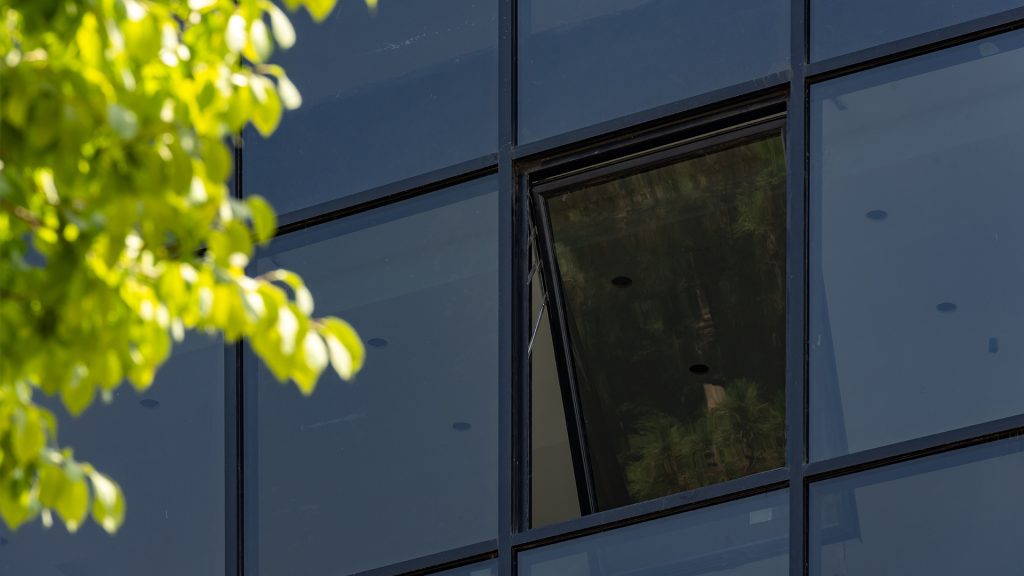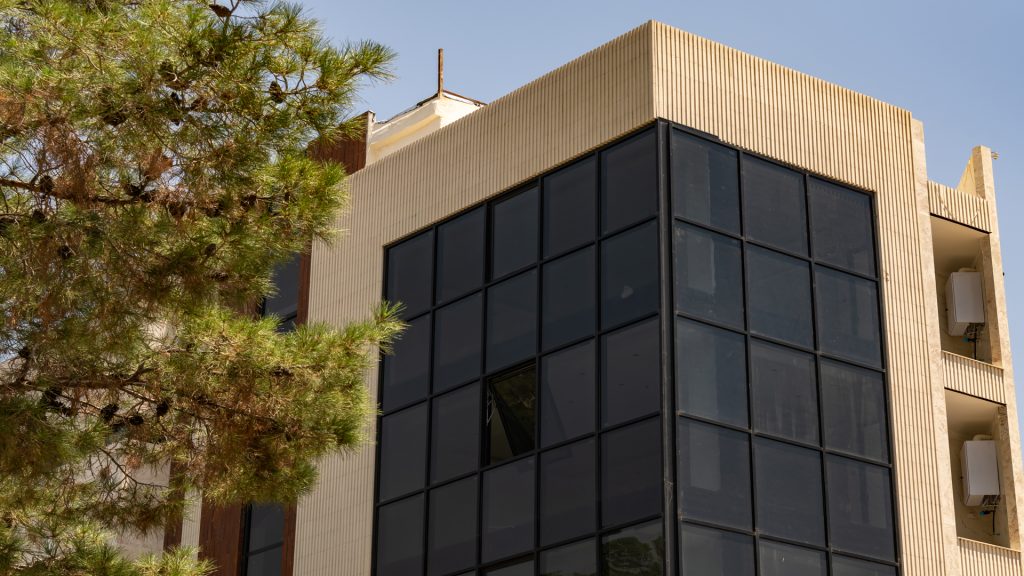Curtain Wall
Curtain wall is a type of building facade that includes a glass grid structure that is placed on a structure called a lamella and has the strength and resistance of a wall, and in addition to being beautiful, its lightness does not add dead weight to the building. In addition to being a good insulator of heat, humidity and sound, the curtain wall facade optimizes the ambient temperature and light and reduces the consumption of various energies in the building. The lamella is an aluminum, wooden or steel grid on which a glass facade is installed and transfers all its weight to this structure.
The most famous and widely used lamellas are aluminum lamellas. Due to its lightness, this structure has good resistance to earthquakes and is cheaper than other building facades. In the curtain wall system, single-walled and double-walled profiles can be used for all types of flat surfaces, polygons, and glass opening ceilings. Curtain wall facade systems are also divided into two types in terms of installation. The first type is frameless, or without visible lines, and the second type is known as face cap or covered.
Regarding the difference between frameless and face-cap facades in curtain wall facades, the exterior view of the facade should be considered. In the face-cap facade, the vertical and horizontal aluminum elements installed in the curtain wall channel facade are visible and distinguish the glasses from each other, but in the frameless facade, the exterior aluminum elements are removed and the main structures under the frameless facade glasses are hidden from the outside of the building. In this way, it presents a more uniform and beautiful view. In the frameless mode, the double-glazed windows are glued to the frameless with a special adhesive in the factory and installed on the facade with fittings and connections. In the curtain wall facade, there is the ability to add opening windows
- Ability to be used in gaps with various appearances
- Ability to be used outward-facing openings
- Can be shaped into arcs, bends and breaks


